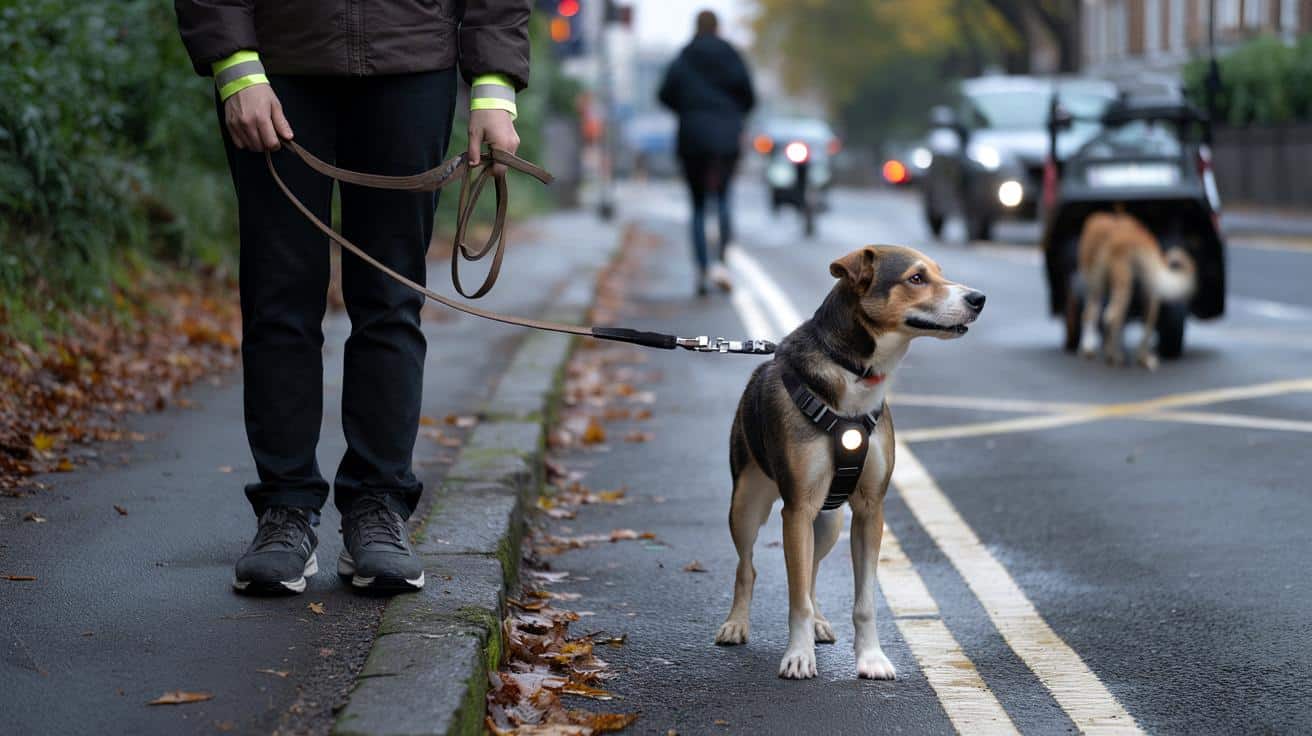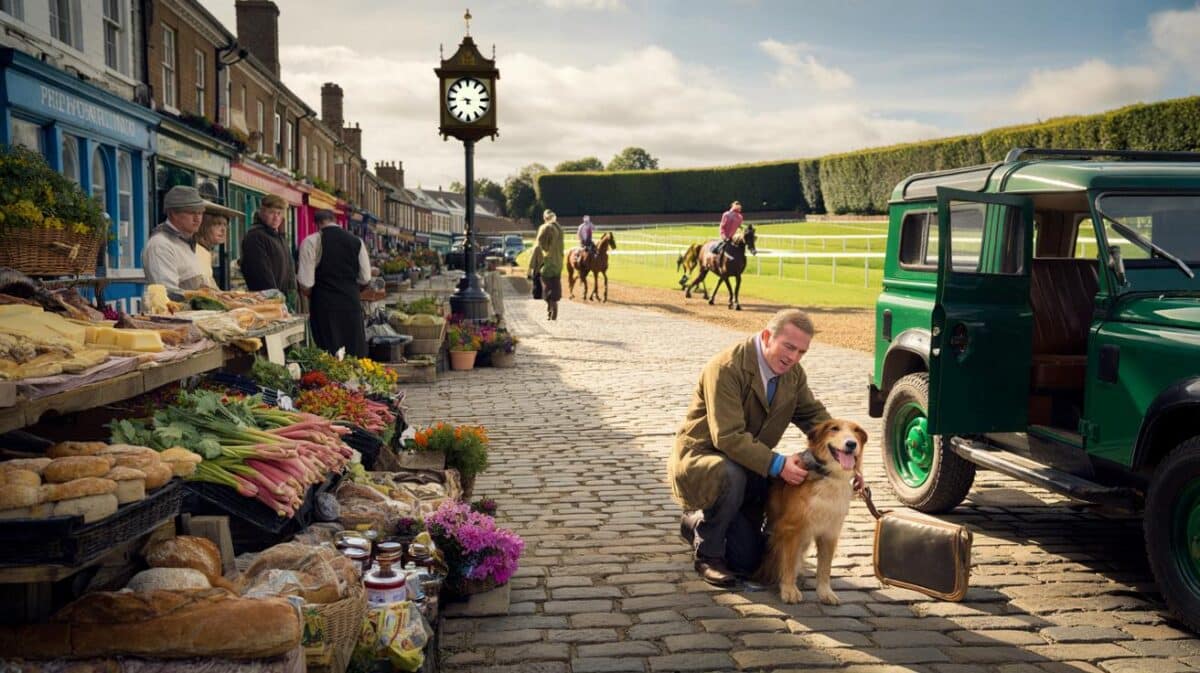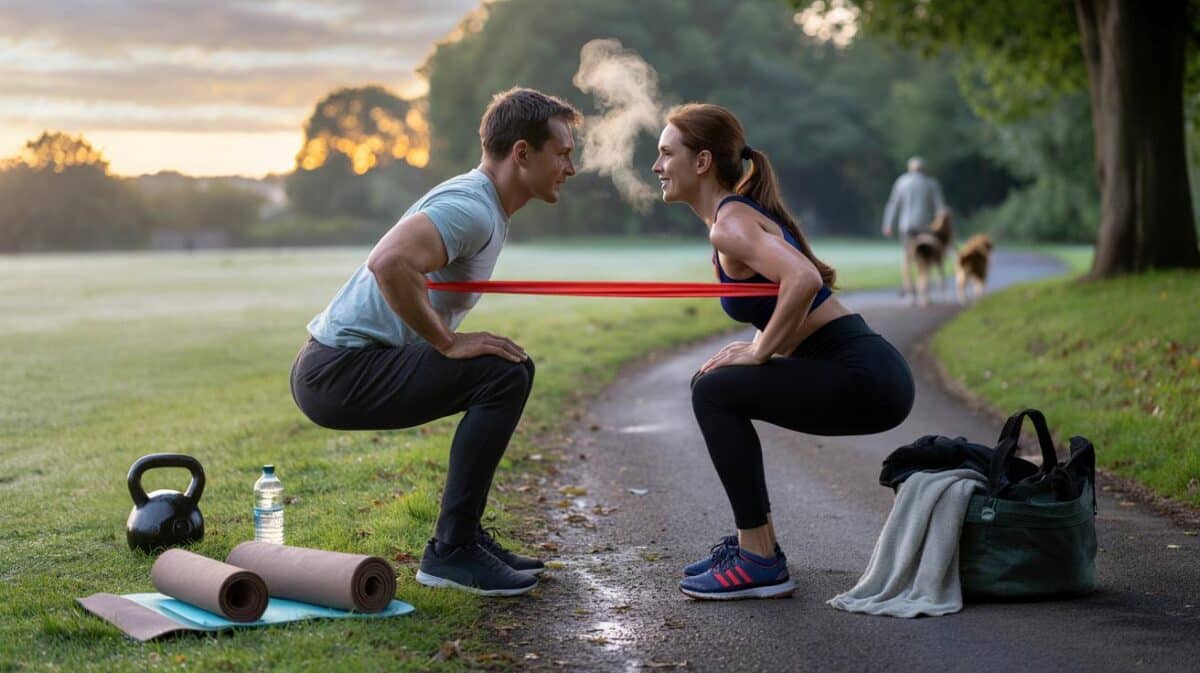Tiny choices at the kerb can swell into big, noisy problems.
Across the UK, trainers are urging quick fixes before chaos hits the end of your lead. Shorter leads, better-fitting harnesses and eyes tuned to stress signals can prevent lunges, tangles and near-misses in a heartbeat.
Why eight seconds matters on the pavement
A dog can turn a corner, hit the end of a long lead and be in the road in seconds. That small gap in attention is where most scares live. Busy pavements, scooter traffic and dropped food set the stage. A 1.5–2 metre lead in towns keeps your hands ready and your eyes scanning ahead, without turning the walk into a parade ground march.
Keep the lead short in built-up areas, scan 5–10 metres ahead and hold a soft curve in the line, not a straining wire.
- Long or retractable leads in crowds trip strangers and wrap ankles in an instant.
- Near kerbs, extra slack invites a dart into the road before you can react.
- Face-to-face greetings on a long line trigger stiff body language and snap decisions.
- In grass, a wide roaming arc means scavenged chicken bones or foil before you even spot them.
| Setting | Lead choice | Benefit |
|---|---|---|
| Narrow pavements, busy high streets | 1.5–2 m fixed lead | Fast guidance at crossings, fewer tangles, cleaner handling |
| Parks with clear sightlines | 3–5 m long line | Room to sniff while you keep direction and pace |
| Open fields or training zones | 7–10 m long line | Recall practice and decompression with a safety back‑up |
Get the harness right, not tight
A loose harness can slip and spark panic. A tight one rubs and nudges a dog into pulling harder. Collars concentrate pressure on the neck when momentum builds. A Y‑front harness spreads load across the chest and shoulders and leaves joints free to move.
Five-point fit check
- Two fingers should slide under each strap with light drag, not empty space.
- The front strap sits above the point of the shoulder, not across it.
- The girth strap sits just behind the elbow, away from the armpits.
- Hardware should sit clear of soft tissue and coat, not dig into skin.
- Clip to the back ring for relaxed mooching; use the front ring when teaching steadier walking.
Recheck monthly. A kilo or two of weight change or a thicker winter coat alters strap tension and movement.
Gently apply pressure to the lead and watch the harness. If it rides up towards the throat, adjust or switch models. If your dog can reverse out, double-clip to the collar while you refit for a belt‑and‑braces safety layer.
Read the early stress signals
Most flare‑ups start with small, quiet signals. A jogger approaches and ears dip. A scooter hums past and the head lowers. These moments are your prompt to change course before a bark or lunge arrives.
- Out‑of‑place yawns during pauses at junctions.
- Rapid lip licks or nose flicks when another dog stares.
- Tight corners of the mouth and a still tail near gates or bins.
- Sudden, intense ground‑sniffing when tension rises.
- Planted feet and a hard stare towards a narrow gap.
Small resets that defuse tension
- Soften your shoulders, exhale and let the lead sag slightly.
- Use parked cars or hedges as visual screens and create room.
- Turn in a short arc rather than backing away in a straight line.
- Scatter a few treats on grass to drop arousal and restart sniffing.
- Keep your voice low and your pace steady and predictable.
Act five seconds sooner than you think you need to. Tiny, early adjustments beat big, late corrections every time.
Dark evenings, wet leaves and fireworks
Shorter days crush visibility. Rain turns leaves into slick traps and hides glass and potholes. Firework bursts spike heart rates in noise‑sensitive dogs. Plan routes with easy exits and quiet cut‑throughs. If you can, walk before dusk. If not, light up and make yourselves visible.
- Clip steady, not strobe, lights to the lead and harness.
- Wear reflective bands so cyclists and drivers spot you early.
- Carry a small torch to check kerbs, puddles and littered food.
- Steer round piles of conkers and acorns; swallowed, they cause trouble.
- After storms, watch for broken branches and wire snagged in long grass.
Make sure the ID tag meets UK rules with your surname and address. If bangs are likely, double‑clip the lead to harness and collar to reduce escape risk if fear kicks in.
A 10‑minute tune‑up that changes the walk
A short warm‑up calms the start and steadies the whole outing. It fits around busy school runs and commutes.
- Minutes 1–2: offer water and check clips, stitching and swivels.
- Minutes 3–4: two “watch” reps indoors, rewarding brief eye contact.
- Minutes 5–6: three sets of three loose‑lead steps, treat by your thigh.
- Minutes 7–8: harness on, re‑do the two‑finger glide under each strap.
- Minutes 9–10: stand by the door until the lead slackens, then go.
Where a long line earns its keep
Open parks and training fields are the place for longer lines. Clip to the back ring, wear gloves and let the line fall in soft S‑shapes. If you need to pause your dog, step on the line lightly instead of grabbing it. Skip retractable leads in crowds; they delay your reaction and can burn skin.
Pair freedom with recall games. Cue once. If there is a pause, turn and jog away. Pay generously when your dog catches you. In busy spaces, carry high‑value food. Use toys for quick sprints and food for focus, not both at once.
Small handling skills that steady everything
The two‑hand hold
Hold the handle in your non‑dominant hand. Take a soft loop with your dominant hand near your hip. Slide more or less lead smoothly while keeping slack. This stance keeps shoulders square and prevents yanking.
Sniff breaks that lower arousal
Allow a brief sniff stop every 30–60 seconds on grass or verges. Sniffing drops heart rate and cuts pulling later on. Mark the stop with “go sniff” and finish with “let’s go” so your dog learns the rhythm.
Predictability calms. Clear cues, planned pauses and right‑sized kit turn tug‑of‑war into an easy habit for both of you.
Extra angles to boost confidence
Run a “quiet route audit”. Time two favourite loops at the same hour on different days. Note traffic peaks, school runs and dog‑heavy stretches. Switch to the calmer loop for two weeks and track changes in pulling and barking. A simple route swap often cuts flashpoints more than any new cue.
Practise a one‑minute safety drill weekly. Rehearse dropping the lead and calmly stepping on it. Train an emergency U‑turn with a cheerful “this way” and three quick treats for following. Add a “find it” scatter on grass for firework nights. If scavenging is a theme, build comfortable muzzle training at home so you can relax in litter‑strewn areas. For dogs with severe noise worries, speak with your vet or qualified behaviour professional about short‑term support during the firework peak.
If you like data, keep a pocket log for seven days. Note lead length used, number of surprise halts, and any barking or lunging. Aim for three changes: a 1.5–2 m lead in town, a harness that passes the five‑point check, and acting on the first stress cue you see. Most walkers report fewer incidents within a week, and a calmer dog within a fortnight.








